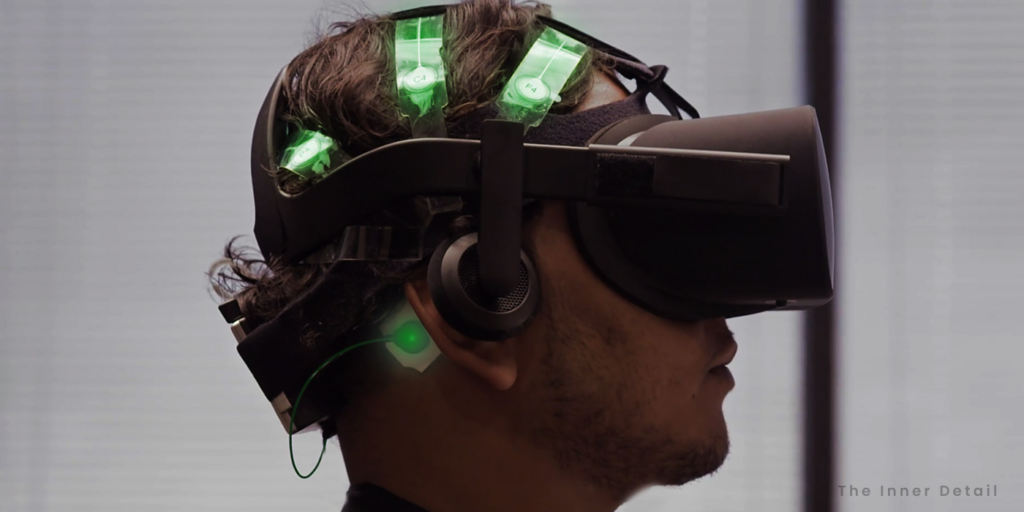Researchers at University of Texas modified Meta’s VR headset to measure brain activity of wearers, letting us know what’s going on inside our brain.
The boom of virtual reality opens the opportunities of integration and exploitation of the technology to be maneuvered for different purposes. Showing death experience using VR tech, enabling us to feel kisses virtually, VR headsets are being explored for many reasons. And now researchers modified the headsets to detect brain activity and analyze how we react to signals, pressures, and other outside forces.
The study by researchers of University of Texas at Austin is published in Soft Science.
VR headset to detect Brain Activity
The team integrated a noninvasive electroencephalogram (EEG) sensor into Meta’s VR headset that measures brain’s electrical activity of wearers during the immersive VR interactions.
The traditional EEG devices comprises of a cap-like helmet fully covered in electrodes, which is uncomfortable to be worn for a long time. The electrodes in the cap struggle to measure the activities precisely as hair on head blocks them from connecting with the scalp.
To overcome these issues and also to make detecting brain-activity feasible, the team created a spongy electrode made of soft, conductive materials that ensures direct connection to the scalp, said Hongbian Li, who is a research associate. The spongy electrodes are hinged to the VR headset across the top strap and forehead pad. An EEG recording device is attached to the back of the headset.
“Virtual Reality is so much more immersive than just doing something on a big screen,” said Nanshu Lu, a professor in the Cockrell School of Engineering’s Department of Aerospace Engineering and Engineering Mechanics who led the research. “It gives the user a more realistic experience, and our technology enables us to get better measurements of how the brain is reacting to that environment.”
Uses of VR Headset with brain-activity
Enabling brain-activity measurement in VR headsets helps in treating anxiety and depression in people, or let airlines measure the mental stress of pilots using a flight simulator.
It provides a gateway to see through the eyes of a robot, to understand it better. The technology may incite robot delivery network project of University of Texas, to study and improve human-robot interactions. “If you can see through the eyes of the robot, it paints a clearer picture of hwo people are reacting to it and lets operators monitor their safety in case of potential accidents,” said Luis Sentis, a professor, who is co-authoring this VR EEG paper.
Testing the Headset
Putting the VR headset into experiment, the team tested if it could accurately record brain activity. The researchers had four participants wear the headset while opening or closing their eyes on command. There is typically an increase in alpha waves in a person’s brain when their eyes are closed, and the researchers could see this increase in the EEG data recorded by their headset.
They also had the participants wear the headset while playing a custom game designed to trigger a type of brain activity that occurs when a person is preparing for an event. As hoped, the researchers were able to see this activity in the recorded EEG data, too.
Researchers of this project are now open to work with VR companies to incorporate it into their systems. The modified VR headset will be first deployed to see what happens in people’s brains as they remotely monitor robots and also to analyze the mental load of employees in job sector, before rolling out to public or other uses. As the production cost of this modified VR headset is unclear as of now, the price-tag hasn’t been revealed.
(For more such interesting informational, technology and innovation stuffs, keep reading The Inner Detail).
Kindly add ‘The Inner Detail’ to your Google News Feed by following us!

